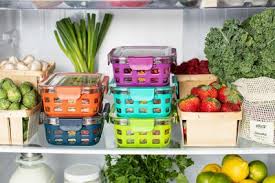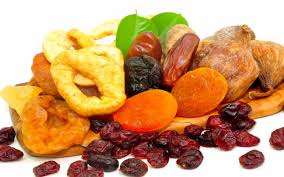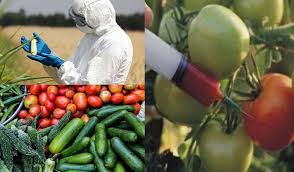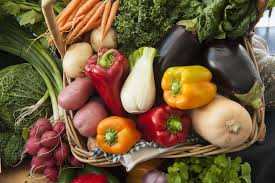The marketable life of most fresh fruits and vegetables can be extended by prompt storage in an environment that maintains product quality. The desired environment can be obtained in facilities where (1) temperature, (2) air circulation, (3) relative humidity, and sometimes (4) atmospheric composition can be controlled.
Storage rooms can be grouped accordingly as (1) those that require refrigeration and (2) those that do not require refrigeration.
Storage rooms and methods not requiring refrigeration include: in situ, sand, coir, pits, clamps, windbreaks, cellars, barns, evaporative cooling, and night ventilation.
It is not always possible to consume or sell all fruits and vegetables while they are still fresh. In this case, part of the harvest may be processed to preserve it for a longer period.
Fresh Storage Techniques for Fruits and Vegetables
Common methods used to prevent spoilage of fruits must include care to avoid cutting or bruising the fruit during picking or handling, refrigeration to minimize the growth of microorganisms and reduce enzyme activity, packaging or storage to control respiration rate and ripening, and the use of preservatives to kill microorganisms on the fruit. Storing vegetables correctly will maintain their freshness and ensure they are safe to eat.
Some fruits and vegetables need to be stored in the refrigerator, others require ripening before refrigeration, and some are best stored at room temperature or in a cool, dry place.
Freezing vegetables is an effective way to preserve nutrients and enjoy their taste for an extended period. Most vegetables need to be blanched before freezing. Blanching involves boiling whole or cut pieces for 1-2 minutes, followed by immediate placement in ice-cold water to stop the cooking process.
This method prevents freeze burn. Frozen vegetables can be stored for up to one year. Freezing is not recommended for eggplant, lettuce greens, potatoes (other than mashed), and sweet potatoes. Squash and root vegetables should be stored in a cool, dark, dry spot outside the freezer.
Garlic, onions, potatoes, sweet potatoes, yams, and pumpkins can also be stored in this way. Tomatoes should be stored at room temperature, away from direct sunlight, to ripen evenly. Once ripe, they can be placed in the freezer.
Read Also: Scale Insects: Description, Damages Caused, Control and Preventive Measures
Procedures for Fruit and Vegetable Preservation

The procedures for fruit and vegetable preservation are summarized in table beleo
Summary of Procedures for Fruit and Vegetable Preservation
| Procedures | Practical Applications |
|---|---|
| Fresh Storage | Fruits, vegetables |
| Cold Storage | Fruits, vegetables |
| Freezing | Fruits, vegetables |
| Drying/Dehydration | Fruits, vegetables |
| Concentration | Fruit and vegetable juices |
| Chemical Preservation | Fruit semi-processed |
| Preservation with Sugar | Fruit products/preserves |
| Pasteurization | Fruit and vegetable juices |
| Sterilization | Fruits, vegetables |
| Sterilizing Filtration | Fruit juices |
| Irradiation | Fruits, vegetables |
Note: Some of these preservation procedures apply only to specific categories of foods, while others can be used across the board (e.g., cold storage, freezing, drying/dehydration, sterilization).
Some procedures guarantee food preservation on their own, while others require combination with other processes to ensure preservation (e.g., smoking must be preceded by salting).
Combined Preservation Procedures
In practice, preservation procedures aim to prevent microbiological and biochemical deterioration, which are the main forms of food deterioration.
Despite significant progress in this field, no single technological procedure can be considered wholly satisfactory from microbiological, physicochemical, and organoleptic perspectives, even if the food value is largely preserved.
Preservation by Drying/Dehydration
Drying is one of the oldest methods of food preservation. The removal of moisture prevents the growth of microorganisms causing decay and minimizes moisture-mediated deterioration reactions.
Drying results in a substantial reduction in weight and volume, minimizing packing, storage, and transportation costs, and enabling storability of the product at ambient temperatures. The recent rise in energy costs has increased interest in drying worldwide.
To ensure high-quality products at a reasonable cost, dehydration must occur rapidly. Four main factors affect the drying rate and total time:
- The properties of the product, especially particle size and geometry.
- The arrangement of the product in relation to the heat transfer medium (drying air).
- The physical properties of the drying medium/environment.
- The characteristics of the drying equipment.
Read Also: Spider Mites: Description, Damages Caused, Control and Preventive Measures
Drying Techniques

Several types of dryers and drying methods, each suited for specific situations, are used commercially to remove moisture from various food products, including fruits and vegetables. The three basic drying processes are sun drying, solar drying, and sub-atmospheric dehydration.
Factors influencing the selection of a particular dryer or method include:
- The form and properties of the raw material.
- The desired physical form and characteristics of the dried product.
- The necessary operating conditions.
- The cost of operation.
Fruit and Vegetable Natural Drying: Sun and Solar Drying
Surplus crops can be preserved by natural drying for use until the next crop is grown and harvested. Sun and solar drying can also be an economical method for distribution to areas with a shortage of fresh produce. This method is simple, inexpensive, and ideal for growers, farmers, and cooperatives.
The best time to preserve fruits and vegetables is during a surplus when transporting fresh produce is difficult. This is especially true for crops that are easily damaged in transport and have a short shelf life. Preservation extends the storage life of perishable foods, making them available year-round despite a short harvesting season.
Sun and solar drying are cheap methods of preservation since they use sunlight as the natural heat source. This method can be employed on both a commercial scale and at the village level, provided the climate is hot, relatively dry, and free of rainfall during and after the harvest. The fresh crop should be of good quality and mature. Poor-quality products should not be used for natural drying.
Dried fruits and vegetables have certain advantages over other preservation methods:
- They are lighter in weight compared to fresh produce.
- They do not require refrigerated storage.
However, if stored at high temperatures and with high moisture content, dried produce may turn brown quickly. It is essential to avoid mixing different maturity levels, as this can result in poor-quality dried products.
Damaged parts, such as those affected by insects, diseases, or discoloration, should be removed. Most fruits and vegetables need to be washed before trimming and cutting, except for onions, which are washed after peeling.
Blanching: A Pre-treatment before Drying
Blanching involves exposing fruit and vegetables to hot water as a pre-treatment before drying. This process offers several benefits:
- It helps clean the material and reduce microorganisms on the surface.
- It preserves the natural color of the dried product, especially carotenoids (orange and yellow pigments).
- It shortens the soaking or cooking time during reconstitution.
Blanching leaches out some soluble constituents, such as water-soluble flavors, vitamins (e.g., vitamin C), and sugars.
For potatoes, this reduces the tendency to turn brown. Blanching requires careful timing, temperature control, and monitoring of conditions.
Use of Preservatives in Fruit and Vegetable Preservation
Preservatives, such as sulfur dioxide, ascorbic acid, citric acid, salt, and sugar, are used to improve color and shelf life. The treatment with preservatives occurs after blanching or, when blanching is not needed, after slicing.
A suitable method involves immersing the product in a preservative solution, then draining it on a clean tray. Care should be taken to maintain the correct strength of the solution, replenishing it after every five batches. Preservatives should only be used in enamel, plastic, or stainless-steel containers to avoid corrosion.
1. Osmotic Dehydration
Osmotic dehydration involves soaking fresh material in a thick liquid sugar or strong salt solution before sun or solar drying. This process reduces moisture content while preserving color, flavor, and texture. It is an effective method, especially when combined with other drying techniques.
2. Shade Drying
Shade drying is used for products that could lose color or turn brown if exposed to direct sunlight. Herbs, green and red sweet peppers, and green beans benefit from shade drying, which preserves their vibrant colors. Like sun drying, shade drying requires full air circulation, making it best suited for open-roofed spaces.
3. Preservation by Concentration
Concentration serves as a form of preservation by reducing the weight and volume of food. It is especially useful for liquid foods, which are concentrated before being dried to achieve economic advantages. Concentration is commonly used for fruit and vegetable juices, jams, jellies, and other food products.
Preservation by Concentration and Use of Chemical Preservatives

1. Aspects of Preservation by Concentration
A. Level of Water
Water plays a central role in the spoilage of foods. Although concentrated foods may still retain enough water to support microbial activity, the type and concentration of solutes especially sugar and salt make the difference.
Foods like fruit and vegetable purées, which are low in acidity, are susceptible to microbial spoilage unless further treated. However, concentrated products such as jams, jellies, and sugar syrups resist spoilage because of their high osmotic pressure.
This osmotic pressure either draws water out of microbial cells or prevents water from entering them, leading to a preservation effect.
i. Sugar Concentration: To inhibit all microbial growth, a sugar concentration of 70% is typically sufficient. Lower concentrations may offer temporary preservation, especially when used alongside refrigeration or acidity.
ii. Salt Concentration: Salt becomes effective as a preservative when its concentration reaches 18–25%, though this level is rarely used outside of specific products like pickles or brined condiments due to taste and dietary restrictions.
Concentration also increases the proportion of natural acids, especially in fruit-based products, enhancing preservation.
B. Reduced Weight and Volume by Concentration
Although preservation is a benefit, the primary reason for concentrating many foods is to reduce weight and volume for easier transportation and storage.
For example, raw tomato pulp with 6% solids can be concentrated to 32% solids, increasing the tomato content from 227 g to 1.21 kg in a 3.785-litre can. This drastically reduces costs associated with packaging, handling, and shipping for processors.
Methods of Concentration
Several technologies are used in food concentration to either retain quality or speed up the process:
1. Solar Concentration: Water is evaporated using the sun’s energy; this is low-cost but slow and less controlled.
2. Open Kettles: Steam-heated kettles concentrate food through boiling. Long heating periods may damage flavour, colour, and nutrients, so the process must be managed carefully.
3. Flash Evaporators: They evaporate water quickly under high heat and short residence time, helping reduce product damage.
4. Thin-Film Evaporators: They spread food in a thin layer over a heated surface, allowing for quick concentration with reduced heat damage.
5. Vacuum Evaporators: Operate under reduced pressure to lower the boiling point, preserving heat-sensitive nutrients and flavours.
6. Freeze Concentration: Removes water by freezing and then separating the ice, preserving nutrients and taste effectively.
7. Ultrafiltration and Reverse Osmosis: These membrane processes separate water from food solids at low temperatures, ideal for delicate products like fruit juices.
Changes from Concentration
Food concentration, especially under high heat, can lead to:
1. Organoleptic Changes: Such as cooked flavours and colour darkening due to prolonged heating at or above 100°C.
2. Nutrient Loss: Particularly heat-sensitive vitamins.
3. Microbial Destruction: Many micro-organisms die at 100°C, but bacterial spores often survive. Acidic foods like fruit juices show better microbial reduction, but sterilisation is still not guaranteed.
4. Microbial Growth in Low-Temperature Vacuum Concentration: Some microbes can survive and even multiply; frequent cleaning and further preservation methods are necessary in these cases.
Chemical Preservation
1. What Are Chemical Food Preservatives?
Chemical preservatives are substances added in small amounts (up to 0.2%) to food to delay spoilage without significantly affecting taste, texture, or nutritional value. Although many chemicals can inhibit microbial growth, only those proven safe and legally approved are permitted in food processing.
Preservation using chemicals typically involves a combination approach pairing the preservatives with intrinsic food characteristics (like acidity and water activity) and external storage conditions (like temperature and atmosphere). This integrated method is known as the hurdle or barrier concept.
2. Common Chemical Preservatives
| Agent | Acceptable Daily Intake (mg/kg body weight) | Commonly Used Levels (%) |
|---|---|---|
| Lactic acid | No limit | No limit |
| Citric acid | No limit | No limit |
| Acetic acid | No limit | No limit |
| Sodium Diacetate | 15 | 0.3–0.5 |
| Sodium Benzoate | 5 | 0.03–0.2 |
| Sodium Propionate | 10 | 0.1–0.3 |
| Potassium Sorbate | 25 | 0.05–0.2 |
| Methyl Paraben | 10 | 0.05–0.1 |
| Sodium Nitrite | 0.2 | 0.01–0.02 |
| Sulphur Dioxide | 0.7 | 0.005–0.2 |
Source: FDA, 1991
This approach allows for lower additive concentrations, better safety, and minimal alteration of food properties.
3. Traditional Chemical Preservatives in Fruits and Vegetables
1. Common Salt: Used in curing and pickling.
2. Sugars (Sucrose, Glucose, Fructose): Applied in jellies, syrups, and preserved fruits.
3. Acidulants: Including lactic acid, acetic acid, malic acid, tartaric acid, citric acid, and ascorbic acid. These reduce pH and help suppress microbial growth.
4. Lipophilic Acid Preservatives: Benzoic acid (as sodium benzoate) and sorbic acid are widely used in beverages and acidic foods.
5. Gaseous Preservatives: Sulphur dioxide and sulphites are used in dried fruits; CO₂ helps preserve carbonated beverages; chlorine-based compounds sanitize fresh produce.
4. General Rules for Chemical Preservation
1. Use Only the Necessary Dose: Avoid exceeding the needed amount for effective preservation.
2. Avoid Reconditioning: Do not add preservatives to already deteriorated food to prolong its shelf life.
3. Use Only Approved Chemicals: Always adhere to national and international standards ensuring safety to human health.
Factors That Determine or Influence the Action of Chemical Food Preservatives
The effectiveness of chemical preservatives depends on several factors which can be grouped into three major categories: factors related to the preservative itself, the micro-organisms present, and the characteristics of the food product.
1. Factors Related to the Chemical Preservatives
i. Chemical composition: The type of preservative used affects its ability to control specific microorganisms.
ii. Concentration: Higher concentrations generally increase the effectiveness, but must remain within safety limits to avoid toxic effects.
2. Factors Related to Micro-organisms
a. Micro-organism species:
i. Sulphur dioxide and its derivatives act broadly against bacteria, yeasts, and moulds.
ii. Benzoic acid and derivatives are more effective against bacteria than yeasts or moulds.
iii. Sorbic acid primarily acts on moulds and some yeasts; at higher doses, it affects bacteria except lactic and acetic types.
iv. Formic acid is more effective against yeasts and moulds, with limited activity against bacteria.
2. Initial microbial load: The number of microorganisms present before treatment influences preservative effectiveness—lower initial loads result in better preservation.
3. Factors Related to the Product to be Preserved
i. Product chemical composition: Ingredients like fats, sugars, and proteins can influence preservative performance.
ii. pH value: Most preservatives are more effective in acidic environments (low pH).
iii. Physical presentation: The form and size of the product (whole, sliced, chopped) affect how well the preservative penetrates.
iv. Temperature and time: Higher temperatures and longer exposure times usually enhance preservative effectiveness.
Preservation of Vegetables by Acidification
Acidification creates an environment unfavourable for the growth of spoilage and pathogenic micro-organisms. This method includes both natural and artificial acidification techniques.
1. Natural Acidification (Lactic Fermentation)
Lactic fermentation is a natural preservation method where lactic acid bacteria ferment sugars into lactic acid, lowering pH and preventing spoilage.
i. This process does not involve heating.
ii. A common example is fermented cucumbers, where brine promotes lactic acid bacteria activity while inhibiting spoilage microbes.
iii. Critical pH (≤4.1) is reached after about 3 days under favourable conditions like moderate salt and starter cultures.
a. Texture Preservation: Enzymes in vegetables (plant-derived or microbial) affect final texture. Some enzymes soften the product unless inactivated by salt or acidic pH.
b. Global Importance: In many developing regions, fermented vegetables remain essential for nutrition and food security, similar in simplicity to sun-drying methods.
2. Artificial Acidification
Artificial acidification uses food-grade organic acids like acetic acid (vinegar) to reduce pH rapidly.
This method is effective due to acidoanabiosis (acid + anaerobic condition) and to a lesser extent, acidoabiosis (acid + oxygen presence).
3. Combined Acidification
This involves partial fermentation followed by the addition of vinegar. Examples include:
1. Sauerkraut
i. Bulk sauerkraut: Fully fermented cabbage with 2–3% salt; final product contains up to 1.5% lactic acid.
ii. Canned sauerkraut: Made from shredded cabbage, fermented with salt, and packed with or without additional flavourings. It may be heat-treated or preserved with permitted additives.
2. Pickles
i. Made from cucumbers (Cucumis sativus L.), possibly fermented, then packed in vinegar with spices and other ingredients.
ii. Final preservation includes heat treatment or the use of safe additives.
These products are preserved through their acidity and sometimes further stabilised by pasteurisation.
Preservation with Sugar
This method involves increasing the osmotic pressure to inhibit microbial growth by adding sugar, often after partial water removal through boiling.
1. Sugar concentration: A minimum of 60% sugar in the final product ensures preservation.
2. Water activity: The water activity is typically reduced to 0.845, which inhibits bacteria and yeasts but not moulds.
3. Mould prevention:
a. Pasteurisation (e.g., jams and jellies)
b. Chemical surface preservatives
4. Hygiene importance: Clean processing is critical after boiling to avoid mould and fermentation. Storage success depends on maintaining low water activity and cleanliness.
Heat Preservation / Heat Processing
Heat is one of the oldest and most reliable methods of food preservation. Different levels of heat treatment produce different preservation outcomes.
A. Various Degrees of Heat Preservation
1. Sterilisation: Involves destroying all microorganisms, including heat-resistant bacterial spores, usually by heating to 121°C for 15 minutes or equivalent.
2. Commercial sterility: Common in canned products, meaning no pathogenic or spoilage organisms can grow under normal storage.
3. Pasteurisation: Involves mild heating below boiling to extend shelf life by reducing microbial and enzymatic activity.
4. Blanching: A milder heat treatment mostly for vegetables, used to inactivate enzymes and reduce microbial load before freezing or drying.
B. Determining Heat Treatment Steps
To design a safe and effective heat preservation process, the following must be known:
1. Target microorganism and its heat resistance in the food product.
2. Heat penetration characteristics of the food and its container to ensure even heat distribution.
3. pH value of the food, which affects the type and duration of treatment needed.
The goal is to apply the minimum effective heat that ensures safety and desired shelf life without damaging food quality.
C. Heat Preservation Process Sequence
The typical heat preservation process includes:
1. Food preparation: Washing, sorting, peeling, chopping, and pre-cooking depending on the food type.
2. Can/receptacle filling: Proper control of solids-to-liquid ratio and headspace (6–9 mm) is essential.
3. Heat treatment: Application of the correct time-temperature combination for sterilisation or pasteurisation.
4. Cooling and storage: Rapid cooling after heating and proper storage to maintain product safety and quality.
Do you have any questions, suggestions, or contributions? If so, please feel free to use the comment box below to share your thoughts. We also encourage you to kindly share this information with others who might benefit from it. Since we can’t reach everyone at once, we truly appreciate your help in spreading the word. Thank you so much for your support and for sharing!

